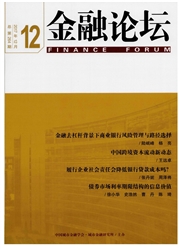

 中文摘要:
中文摘要:
逆抵押贷款作为一种补充养老保障服务提供模式,旨在通过“以房养老”的形式提高老年人生活水平。通过住房逆抵押贷款老年人可以将房产抵押,由相关运作机构根据房产价值定期给付年金,实现资产现金的转换,而申请人则可以继续保留房产的居住权。本文通过借助金融学和投资学的相关模型,综合运用精算分析方法,对逆抵押贷款进行了精算模拟,进一步提出了我国推行逆抵押贷款的可行方案。文章指出在我国应由政府作为政策引导者,充分发挥商业银行作为住房逆抵押贷款项目的主体作用,借助保险机构、房产中介机构及专业信托公司等第三方机构,共同支撑住房逆抵押贷款项目在我国的全面推行。
 英文摘要:
英文摘要:
As a form of complementary endowment security services, RAM is designed to improve the life quality of old people in the form of receiving annuity from financial institutions by mortgaging their houses. Under this pattern, old people can get annuity based on the house's value and realize the transition from assets to cash. At the same time, the resident also can keep the right of habitation. By using the relevant financial models, the paper makes an actuarial simulation on RAM and brings forward possible schemes on how to carry out this business. The paper also points out that the government should play the role of policy guider and encourage commercial banks to be the core of this business. Meanwhile, with the cooperation of the third party, such as insurance companies, house agencies and SPVs,all these institutions can further the overall popularization of RAM business together.
 同期刊论文项目
同期刊论文项目
 同项目期刊论文
同项目期刊论文
 期刊信息
期刊信息
